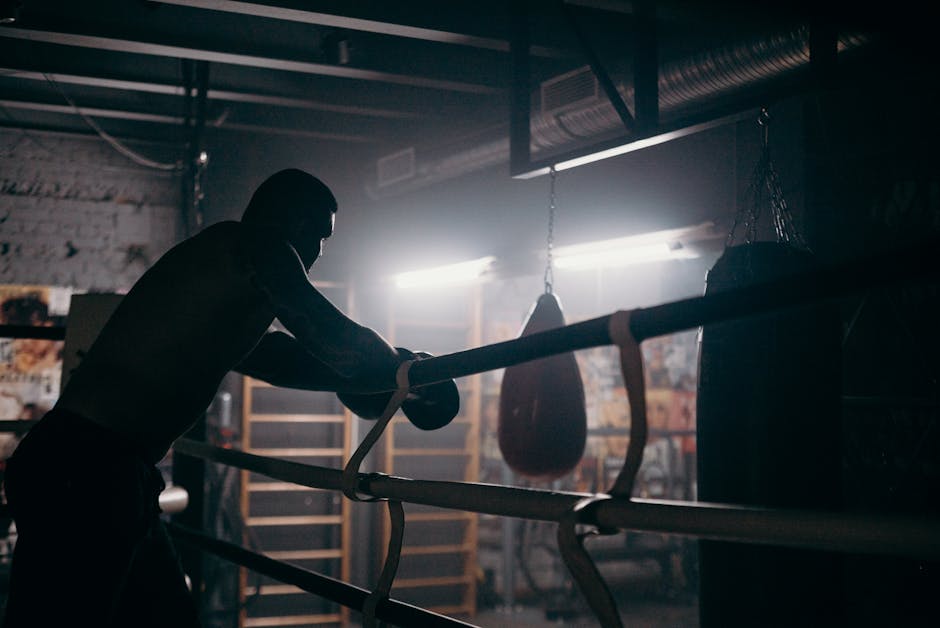Understand What 12 Rounds Really Demand
You don’t coast through a 12 round fight you survive it, round by round. That means training your body to deliver two types of energy: aerobic and anaerobic. Aerobic conditioning is your base. It keeps your engine running, helps you recover between rounds, and fuels steady output through minutes of movement. But it’s not enough. Anaerobic conditioning short bursts of high power without oxygen is what gets you through intense flurries, clinch breaks, and tight exchanges. You need both if you’re going to last and be dangerous in the championship rounds.
Boxing demands more than just throwing punches. Footwork drains your legs. Clinching eats into your grip and core. Slipping, weaving, pivoting all of it taxes different muscle groups over and over again. Add in the constant mental calculations where to step, how to counter, when to breathe and you’re burning energy on all fronts. It’s not just stamina. It’s stamina under chaos.
So how do you measure your readiness? Look at your heart rate zones. If you can stay out of the red for most of your work, you’re adapting well. VO2 max tracks your peak oxygen use, a window into how hard your body really works. Recovery time how fast your heart rate drops post round is another brutal truth meter. The data won’t lie. Neither will your legs when the 9th round hits.
Bottom line: if you’re not building both systems, tracking every metric, and preparing for the mental grind, you won’t make it past eight with your hands up.
Start with a Smart Training Base
Building stamina for a 12 round fight begins long before the first bell. Without a structured foundation, even the most talented boxers can fade in the later rounds. Developing a smart training base is essential for sustaining high output across multiple rounds.
Structure Your Training Week
To build championship level endurance, your weekly training plan needs to combine aerobic development, anaerobic power, and proper recovery:
Roadwork (4 5 days/week): Focused runs that build cardiovascular capacity
High Intensity Interval Training (HIIT): Short bursts of max effort to improve fight paced recovery
Active Recovery Days: Light movement, mobility work, and technique focus to avoid overtraining
Rest Day (1 2 days/week): Full rest or minimal activity to let your system rebound
Road Running, Not Jogging
Too many fighters make the mistake of “just jogging.” Championship fights demand more:
Tempo Runs: Maintain a steady but challenging pace over 3 5 miles to improve aerobic threshold
Interval Sprints: Short bursts like 400m sprints or hill runs with recovery jogs help mimic the stop start nature of combat
Finish Strong: End runs with a final round of sprints or strides to simulate the need to close strong in later rounds
Prioritize Sleep and Hydration
Recovery isn’t passive it’s built into the system that supports high level endurance.
Sleep: Aim for 7 9 hours each night to let muscles repair and nervous system reset
Hydration: Dehydration reduces energy production and reaction time stay on top of water and electrolyte intake daily
Track Recovery: Use tools like resting heart rate, HRV (heart rate variability), or just how your body feels to make decisions
Remember: stamina isn’t just built in the gym it’s earned 24 hours a day. From roadwork to recovery, your base determines your ceiling.
Boxing Specific Conditioning Tactics

The roadwork and HIIT lay the foundation but stamina for 12 rounds gets forged in the gym, inside the ring, and under fatigue. First up: high volume mitt and bag work. Not just clean combinations, but hundreds of punches after sprints, push ups, or resistance drills. Your hands need to fly even when your lungs are screaming. That’s how you build punch output and mental clarity when the legs fade.
Sparring ladders come next. Think of it as sparring with purpose: controlled rounds that gradually increase in intensity, length, or resistance. It might start with 60 second rounds at light pace, but by the end, you’re in deep water rounds with a fresh opponent pressing you hard. Each round teaches you to manage pace, conserve fuel, and stay smart even when you’re running low.
Then there are defensive pressure drills partner drills that don’t let you coast. Slip, block, pivot, clinch again and again, with no open window to catch your breath. These drills jack up heart rate and simulate the chaos of a real fight when your back’s against the wall. Your body learns to stay alert under stress; your lungs get used to functioning without full recovery.
Footwork also plays a critical role in conditioning. Don’t just shuffle move with intent. Stay sharp, stay mobile, and stay on angle. For a deeper dive, check out these Essential Footwork Drills Every Boxer Should Practice.
This section separates casuals from lifers. You don’t accidentally survive 12 rounds. You build it in here, one hard rep at a time.
Fuel for the Deep Rounds
You can’t out train bad fueling. Long sparring blocks and grinding mitt sessions burn through glycogen fast, so locking in your nutrition matters. Carbs are your base they keep the engine running. Think slow digesting options like oats or rice before your workout, and simple carbs like bananas or sports drinks if you’re hitting a double session day. Protein comes in next to repair damaged muscle lean sources, steady throughout the day. Electrolytes? Mandatory. Especially if you’re sweating buckets. Use a low sugar electrolyte mix or salt your food properly. Cramps won’t win you a title.
Come fight week, don’t crash and burn chasing the cut. Taper your volume, but keep intensity tight. Shorter, sharper sessions with clean movement keep your lungs tuned without draining your gas tank. Nutrition should shift slightly too lighter meals, easy to digest, but with plenty of fuel. This isn’t the time for experimentation.
Between rounds, what you eat may look minor, but it’s functional. Small amounts of simple carbs (a bit of honey, a sip of juice) can top off your tank and keep brain focus sharp. Forget greasy bites or anything your stomach has to fight with. You’ve got enough battles in the ring. Fuel smart, stay sharp.
Build Mental Stamina Too
If you’re serious about going 12 rounds, you can’t just hit the bags and call it a day. Your body will fail if your mind taps out first. That’s where simulation sparring comes in. You need sessions that mimic the chaos and pace of a real title fight full rounds, real pressure, no mental coasting. Fast starts. Tough finishes. No shortcuts.
But it’s not just about grit. Breathing patterns matter. A lot. You’ve got to train yourself to inhale and exhale with control, especially under duress. Think: slow nose breaths between rounds, focused exhales during combos. Pair that with visualization seeing the late rounds before you’re in them. Run mental reps before you ever glove up.
Between rounds, do resets. Don’t just slump in the corner run through cues, posture, rhythm, and focus. Treat every pause like a micro strategy session. That’s where mental stamina forms.
This kind of intensity can burn you out if you’re not careful. Schedule troughs after your peaks. Mentally de load when needed. Burnout doesn’t make you tougher. Smart programming does. Total fight readiness doesn’t just come from being in shape it comes from being wired to recover, re focus, and re engage when it matters.
Final Note: You Don’t Fake 36 Minutes
There’s no shortcut to lasting 12 rounds. No gimmick. No hack. Just weeks months of building a system that can carry you through fire when your legs scream and the final bell feels miles away.
That kind of engine doesn’t come from randomly hitting the bag or throwing on a weighted vest. It’s built through hard structure: the conditioning, the precision in your technique, the sleep, the clean eating day after day. Everything must feed the mission. One weak link sloppy footwork, inconsistent sparring, skipped roadwork and it shows up when the tempo climbs in round 8 and never comes back down.
You either invested in your gas tank, or you didn’t. That truth gets exposed under the lights. So put the work in now. Because when the 10th round hits, there’s no hiding anymore.
